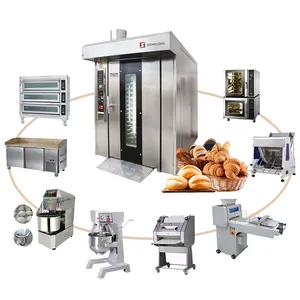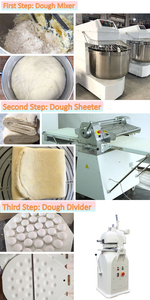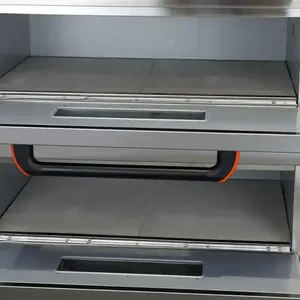(45669 products available)











































































































































































































There are several types of baking ovens, and each one has its unique way of creating delicious cakes. When it comes to cake baking in oven, different types of ovens can be used depending on what one prefers.
Conventional ovens
Conventional ovens are widely used for various cooking tasks, including cake baking. They use gas or electricity as their main source of heating. Conventional ovens rely on bottom heating elements and upper ones, which makes them suitable for baking in general.
Convection ovens
Convection ovens are another popular choice when it comes to baking cakes. Unlike conventional ovens that only have stationary heaters, convection ones are equipped with fans that circulate air inside them. This ensures uniform heat distribution throughout the oven space, thus resulting in even cooking.
Toaster ovens
Toaster ovens are small appliances designed mainly for toasting bread slices and reheating food items. However, they can also be used effectively for baking small cakes or muffins. Toaster ovens have compact sizes and less power consumption compared to larger ones.
Wall ovens
Wall ovens are built into walls rather than placed on countertops like regular stoves. They come in different sizes depending on one's kitchen space requirements. Wall ovens can be conventional, electric, or gas-powered.
Electric ovens
Electric ovens use heating elements located at the top and bottom parts of the appliance for cooking food. They are easy to use and maintain, making them a popular choice for baking. In electric ovens, the heat intensity can be adjusted using control knobs or digital displays.
Gas ovens
Gas ovens use flames produced by burning gas as their main source of energy for cooking food. They offer instant temperature control, making them ideal for recipes that require quick changes between high and low temperatures. Gas ovens provide moist heat, which some bakers prefer for certain cakes.
The oven's design and features can significantly impact the baking process and the final result. Here are some key aspects of the oven's design to consider when baking cakes:
Size and capacity:
The size and capacity of the oven should meet the needs. If baking large cakes or multiple cakes simultaneously is required, consider an oven with a more extensive capacity or a double oven.
Heating elements:
Electric ovens typically have heating elements located at the bottom and top of the oven. The bottom element provides heat for baking, and the top element works well for broiling and browning cake tops.
Temperature control:
Accurate and precise temperature control is crucial for successful cake baking. Look for an oven with a reliable thermostat and easy-to-read temperature settings.
Cooling system:
Some advanced ovens come with turbo cool systems that quickly cool down the oven after use. It can be beneficial if some delicate cakes are baked that require rapid cooling to prevent overcooking or damage.
Interior design:
The oven's interior should be easy to clean and maintain. Removable shelves, smooth surfaces, and special coatings can make cleaning up spilled cake batter and baking residues more accessible.
Electricity consumption:
Consider the oven's electricity consumption. Some models may be energy-efficient, reducing electricity bills and environmental impacts.
Safety features:
Safety features are also essential considerations, such as flameout protection, overheat protection, and heat-insulated door design, to ensure safe baking.
Control methods:
The control methods for the oven can be a key factor in user experience. Some ovens use manual knobs to control, while others use electronic touchscreens for control.
In short, when designing an oven for baking cakes, it should have features such as even heat distribution, temperature accuracy, multiple racks, and convenient controls to ensure that cakes are baked perfectly every time.
Restaurants:
Restaurants use big commercial ovens to bake, cook, and reheat different foods. With a strong build and big space, these ovens are suitable for baking large quantities of food fast and evenly. For example, baking cakes, cookies, breads, and pies. They are also used for cooking dishes like roasted chicken or casseroles. Moreover, when baking or cooking certain foods, restaurants can adjust the temperature and time accordingly.
Hotels:
Hotels use commercial ovens to prepare food for their guests. Some hotels even have bakeries where they bake cakes, cookies, breads, and pastries for the guests. Commercial ovens are ideal for this because they can handle the high demands of baking large quantities of baked goods quickly and evenly.
Cafes and coffee shops:
Cafes and coffee shops use commercial ovens to bake fresh breads, muffins, cookies, and cakes for their customers. Ovens are important in these places because people like to have baked goods with their coffee or tea. With the help of an efficient oven, cafe owners can provide fresh homemade muffins every morning.
Bakeries:
Bakeries depend heavily on commercial ovens since their main business is producing various kinds of baked goods. From loaves of bread to cakes and pies, bakery ovens must be able to offer consistent results over long periods. Some specialized oven models may even have features specifically designed for pastry making.
Food trucks and catering businesses:
In mobile kitchens, food trucks, and catering businesses, having reliable equipment is crucial, especially when it comes to feeding large crowds or serving dishes at outdoor events. That's why many entrepreneurs opt for compact yet powerful units like convectional ones, which circulate hot air around the inside, ensuring uniform browning and cooking throughout the whole process. This is particularly useful when making pizzas, as it gives a nice crusty finish every time.
Cooking classes and culinary schools:
Professional chefs are trained using commercial-grade ranges, so they know how to operate them. This includes understanding different settings, such as conventional versus convection baking, broiling, etc., along with maintaining hygiene standards while handling raw ingredients. Additionally, students learn about recipe development, menu planning, cost control, etc., which are essential skills required for anyone who wants to pursue a career in the hospitality industry.
Institutional kitchens:
Schools, hospitals, and prisons have large kitchens where meals are prepared on-site. These institutions require commercial ovens due to the volume of food served daily, especially when cooking large batches of stews, casseroles, or baking breads. For example, institutional oven models are designed with durability and ease of cleaning so that leftover food does not stick anywhere after being used up.
When it comes to baking tools for ovens, there are some important things to think about. Different baking tools are needed depending on the type of baking being done. Here is how to choose the right baking tools for baking cakes in ovens:
Material quality:
Choosing good materials for baking tools is very important. People should opt for baking trays, tins, molds, and pans made from high-quality metals like aluminum or stainless steel. Such metals conduct heat well, ensuring even baking. Moreover, selecting baking tools made from silicone or other non-stick substances is also advisable. Those materials are convenient as nothing sticks to them, and they can be used for a long time.
Durability and longevity:
Durable baking tools last longer and save money in the long run. People should look for baking tools with strong handles that can bear the weight of cakes when lifted. Additionally, checking if mixing bowls, measuring cups, and spoons are resistant to breaking or bending is also advised. Furthermore, opting for baking sheets with reinforced edges and selecting oven mitts or pot holders made from heat-resistant materials is also recommended.
Size and storage:
Considering the available space for storing baking tools is very important. People should measure cupboard spaces before purchase to ensure baking sheets and pans can fit properly. Additionally, checking the depth and width of kitchen drawers is advised so that mixing bowls and utensils can be accommodated conveniently without becoming a hassle every time they want to bake cakes in ovens.
Heat resistance:
All baking tools must withstand high temperatures without melting or getting damaged. People should select heatproof spatulas and spoons while also ensuring silicone baking mats and parchment papers can handle the heat. Moreover, opting for oven mitts or potholders made from materials that do not catch fire easily is also recommended.
Q1: What is the ideal temperature for baking a cake?
A1: The standard temperature for baking most cakes is 350 degrees Fahrenheit.
Q2: How can one tell if a cake is done?
A2: One can test doneness by inserting a toothpick into the center of the cake; it should come out clean or with few crumbs.
Q3: Should the oven be preheated before baking a cake?
A3: Yes, preheating the oven is crucial to ensure it reaches the desired temperature before placing the cake inside.
Q4: What rack should the cake be on?
A4: The middle rack is best for even heat circulation, preventing the cake from browning too quickly on top or bottom.
Q5: Can your baking times vary?
A5: Yes, different recipes may require other baking times; always follow what is written.
The keyword "cake baking in oven" maintains a stable average monthly web search volume of 480, with no significant changes observed over the past year. The data reveals a consistent pattern with minor fluctuations, where the highest web search volume reached 590 in January 2024, and the lowest was 320 in July 2024.
Throughout the year, the web search volume for "cake baking in oven" shows a noticeable seasonal trend. Search volumes peak around January, possibly due to the holiday season's influence, where more baking is expected. Conversely, the lowest web search volume occurs in July, suggesting a possible decrease in baking activities during the summer months. The data also indicates that web search volumes tend to return to the average of 480 after these fluctuations, demonstrating a resilient baseline interest in this keyword.
Analyzing the monthly data, the keyword experiences its most pronounced dips and rises during transitional months, with March, April, and October seeing a reduction from the previous months, while May and September show recovery back to the average. This cyclical behavior suggests that external factors such as seasonal events, holidays, and possibly even weather conditions could be influencing the frequency of web searches related to cake baking in ovens.